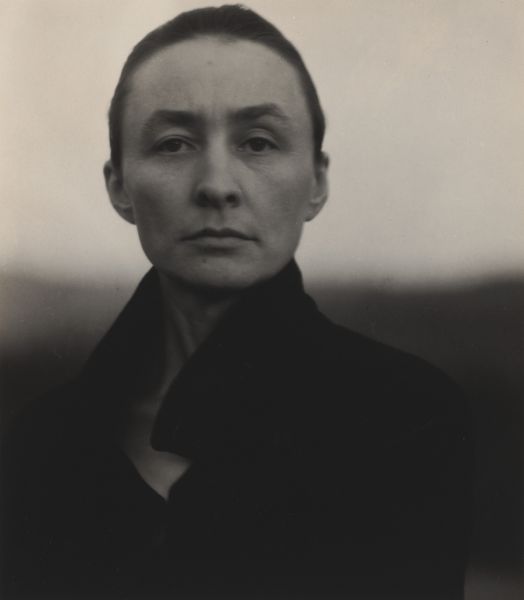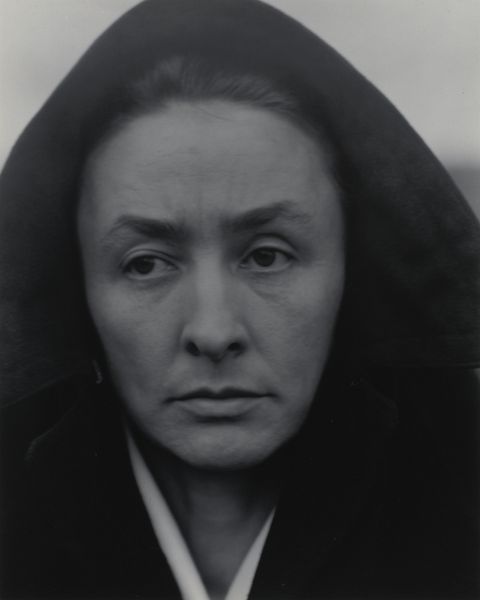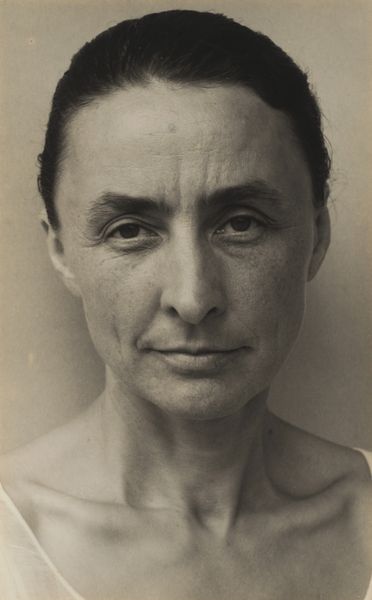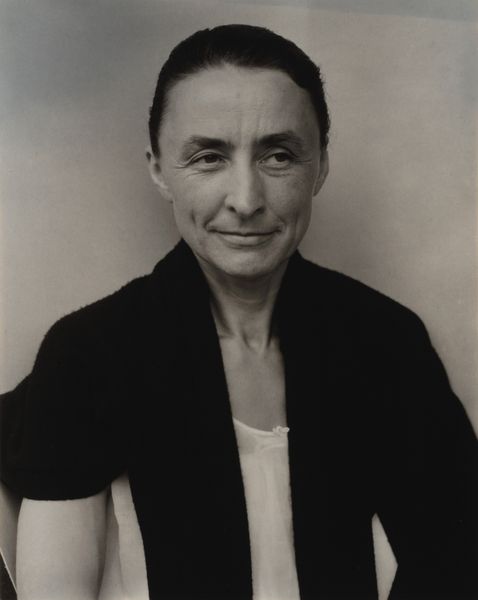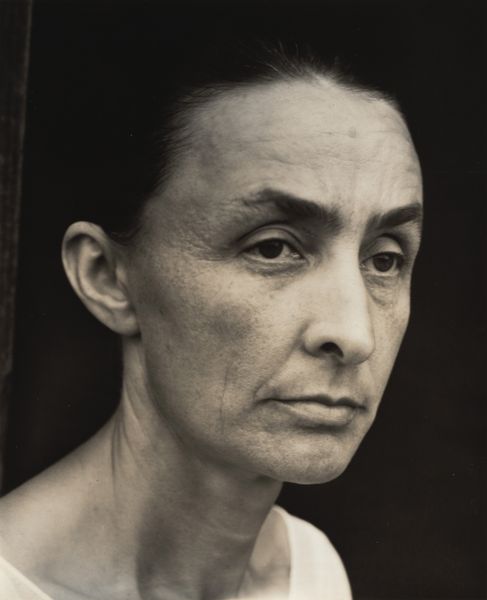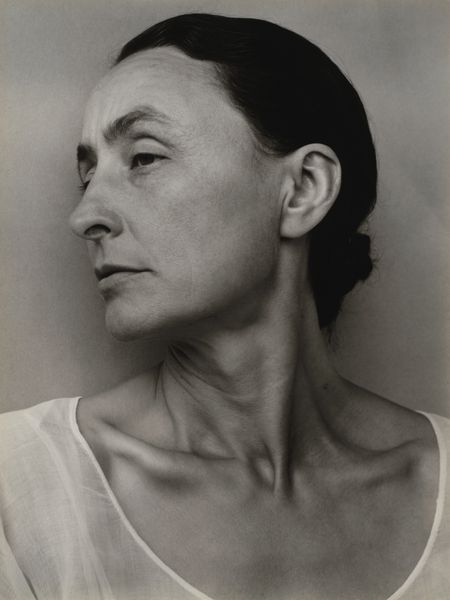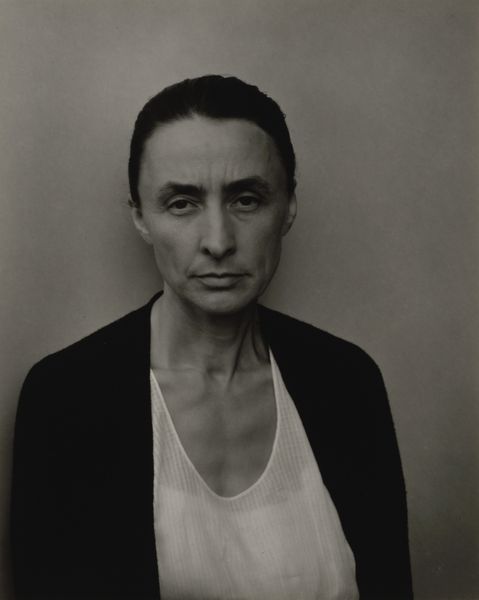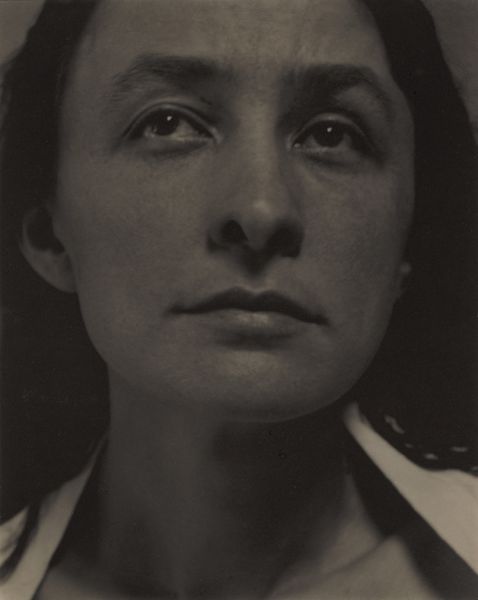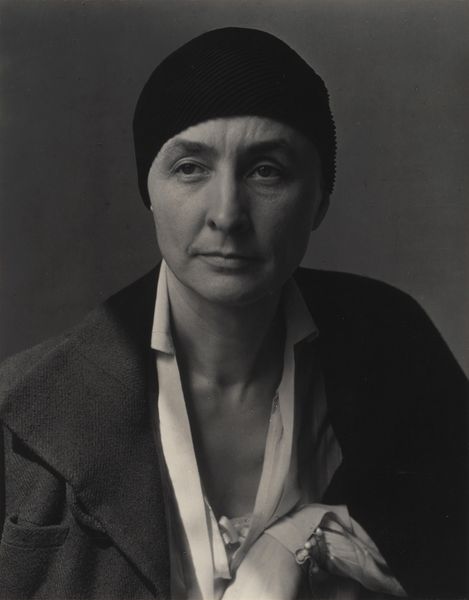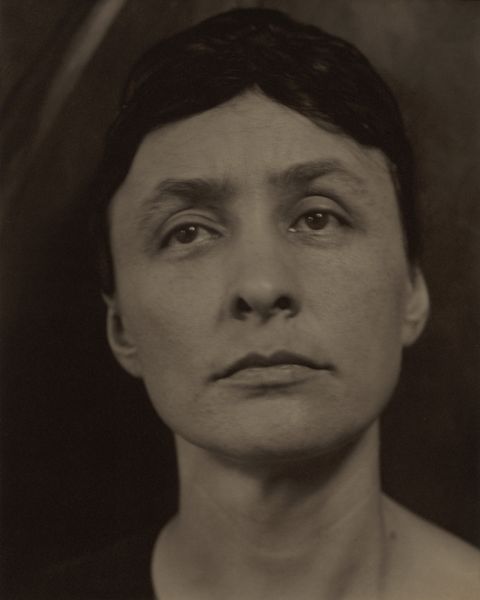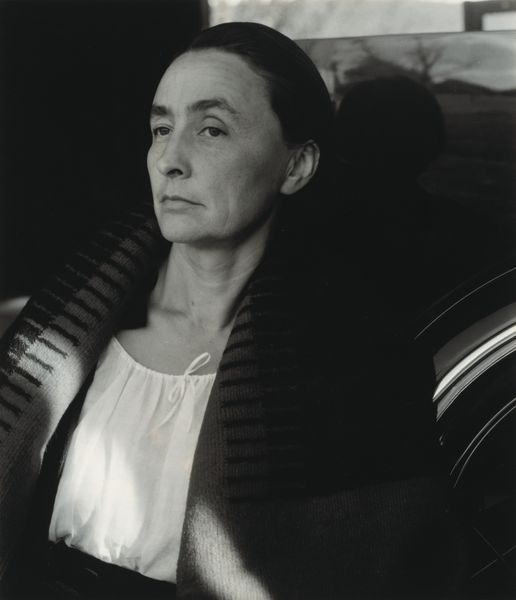
photography
#
portrait
#
low key portrait
#
portrait image
#
portrait
#
portrait subject
#
black and white format
#
photography
#
portrait reference
#
portrait head and shoulder
#
black and white
#
single portrait
#
realism
#
celebrity portrait
Dimensions: sheet (trimmed to image): 24.2 × 18.9 cm (9 1/2 × 7 7/16 in.) mount: 52.9 x 41.8 cm (20 13/16 x 16 7/16 in.)
Copyright: National Gallery of Art: CC0 1.0
Editor: Here we have Alfred Stieglitz's photographic portrait of Georgia O'Keeffe from 1932. It's striking how unglamorous it is. The texture of her skin, the simple clothing... What do you see in this piece that I might be missing? Curator: Observe how the tonality of the gray background meets the darker tones of her dress. Note the geometric severity with which the lines are laid down. It's not simply representational, it’s a composition carefully balanced through contrasts of light and shadow. Do you notice the subtle gradation around her face? Editor: Yes, now that you point it out, there’s almost a halo effect achieved through the lighting. Is that significant? Curator: It enhances the architectural quality of the planes of her face, drawing attention to the structural elements – the brow, the cheekbones. The framing, too, is deliberate. Stieglitz crops the image tightly, focusing on the essential form and minimizing extraneous detail. What does that suggest to you? Editor: That he wanted the viewer to really study the composition of her face, to see it almost as a landscape? Curator: Precisely. Consider how this portrait differs from conventional celebrity photographs of the time. It eschews artifice in favor of a direct, almost brutal honesty in the exploration of form. What feelings does the picture provoke? Editor: It's more serious than celebratory; like Stieglitz wanted to capture the truth. Thanks, that gave me a fresh appreciation. Curator: Indeed, examining formal properties allows us deeper insight, beyond superficial likeness. It emphasizes intention and impact.
Comments
No comments
Be the first to comment and join the conversation on the ultimate creative platform.
